Тут по учебе/работе собрано, так что кому это не интересно: проматывайте.
С этим семейством у меня просто полный раздрай в голове, так что, попытаюсь систематизировать это дело тут.
Запомнить хотя бы ЭТИ !!!
90% этого рода - Калатеи, остальные 10% - Маранта, Стенанте и Строманте.
 Marantaceae
Marantaceae
Calathea
Тене- и влаголюбивые растения, нуждаются в защите от сквозняков и прямых солнечных лучей. Требуют высокой влажности воздуха. Содержатся зимой при температуре 18-20С. Предпочитают полутень, при ярком свете окраска листьев бледнеет. Прямых солнечных лучей следует избегать - листья теряют окраску и засыхают. Зимой держат в хорошо освещаемом месте вдали от прямого солнца.
Прекрасно растет на гидропонике. Калатеи лучше растут в плошках.
Летом - обильный полив с регулярным опрыскиванием, зимой полив уменьшают. Поливают теплой мягкой водой. Горшок помещают во влажный торф.
Calathea warscewiczii
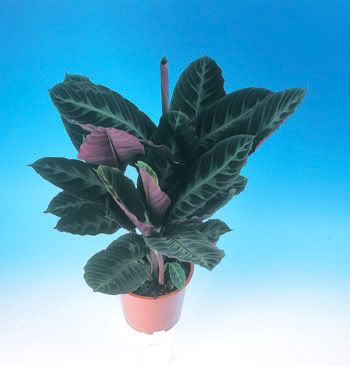

The Warsewiczzii has a long-shaped dark leaf with a striking light blocked vein that changes into dark.
Like the Zebrina, this plant is conspicuous because of its velvety leaf. In winter this plant is popular because of its beautiful white flowers.
The Warsewiczzii cannot bear any direct sunlight. It prefers semi-shadow places and hates draught.
The ideal temperature is between 16 and 27° C. Water it regularly and keep the potting compost humid. Add extra fertiliser once every fortnight.
With this advice you may enjoy your very decorative plant for a very long time
Calathea 'Freddie'
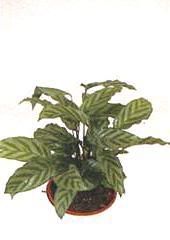
Calathea crocata
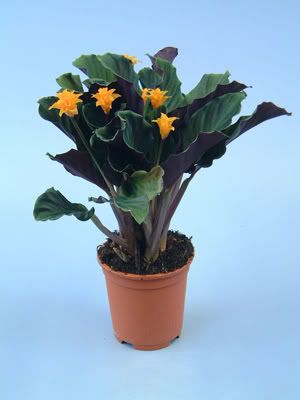
Calathea crocata Candela
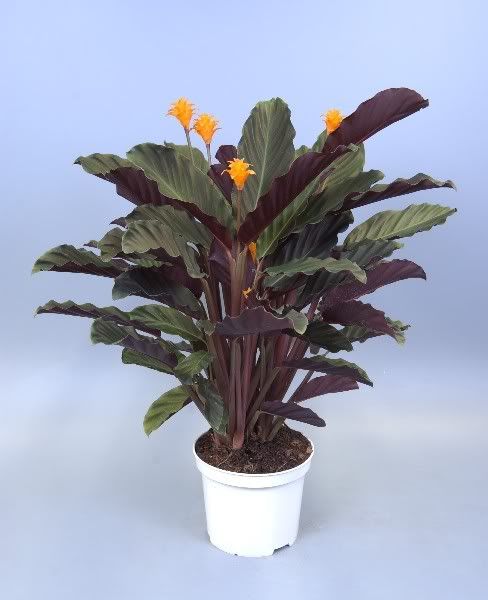
Calathea ecuadoriana / zebrina - ? ..... Calathea zebrina Lindl.
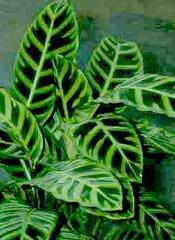 ..............
..............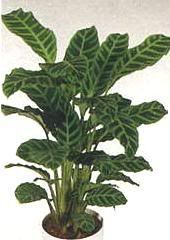
The Zebrina has a dark green leaf with a striking light vein. Because of its velvety hair on the leaf the plant is very decorative.
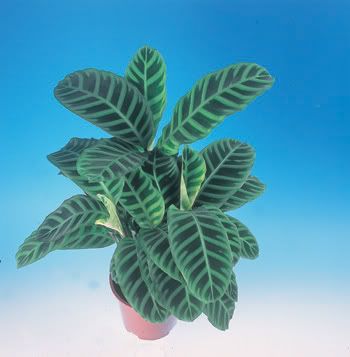
Calathea Exotica
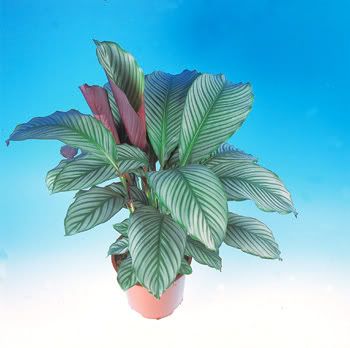
The Exotica has a grey leaf with a dark green vein, and the bottom of the leaf is dark red.
Calathea argyrophilla
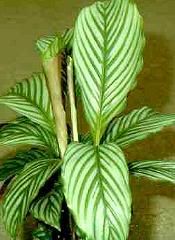
Calathea lancifolia (syn. C. insignis)
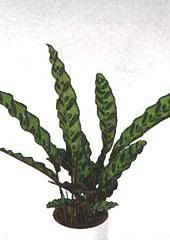
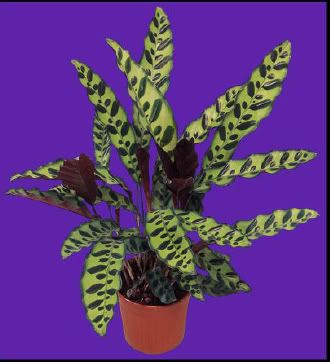
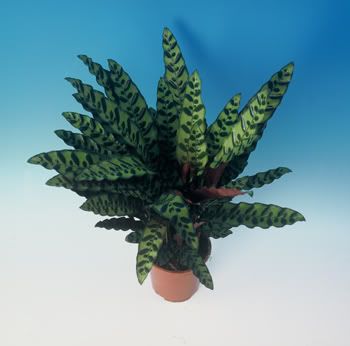
The Lancifolia is the oldest specie among the family of the Calathea.
It is a strong plant with a light colored and dark green striped leafs.The bottomside of the leafs are purple.
In the evening the plant closes its leaves.
Calathea leitzei
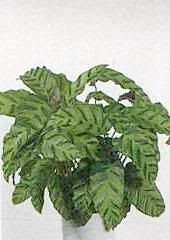
Calathea leopardina

Calathea macoyana Morr.
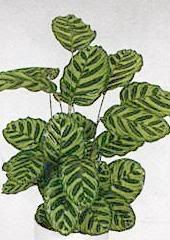
Calathea maranatha
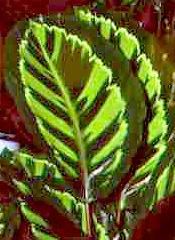
Calathea orbifolia
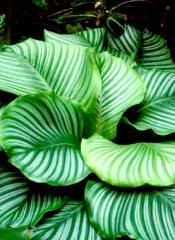
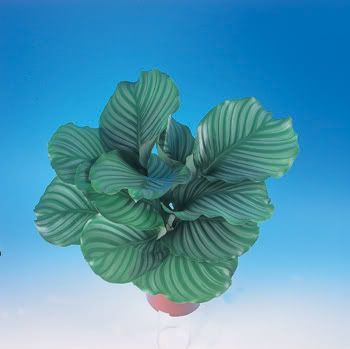
The Orbifolia has a large round leaf, which has a light green colour with darker veins.
The large round leaves may have a diameter of 25 cm.
The Orbifolia has a stocky way of growing.
Calathea rotundifolia
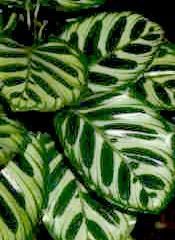
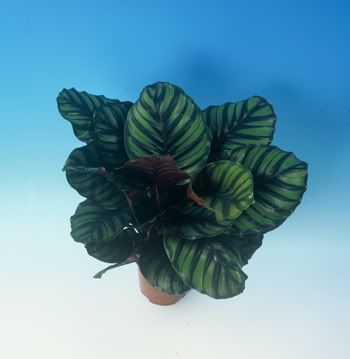
The Rotondifolia has a large round leaf, which has a red-puple colour with light-green veins.
The large round leaves may have a diameter of 25 cm.
The Rotondifolia has a stocky way of growing.
Calathea ornata Koern (sanderiana). var. roseo-lineata Rgl.
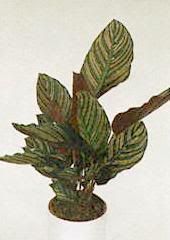
Calathea pseudoveitchiana
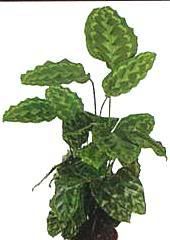
Calathea rosea picta
The Rosea-Picta is a round-leafed variety, with a markedly sharp marking in the leaf.
The leaf has light and dark parts, and a dark leaf edge.
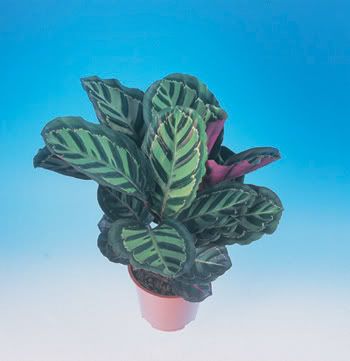
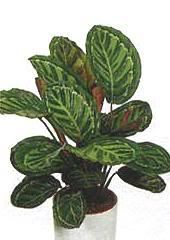
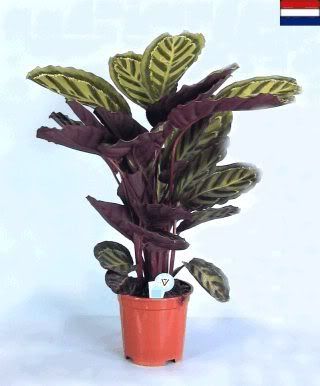
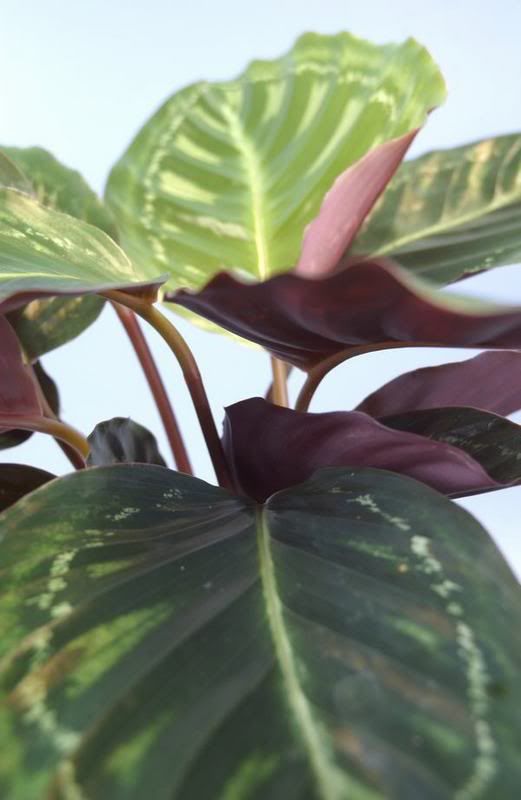
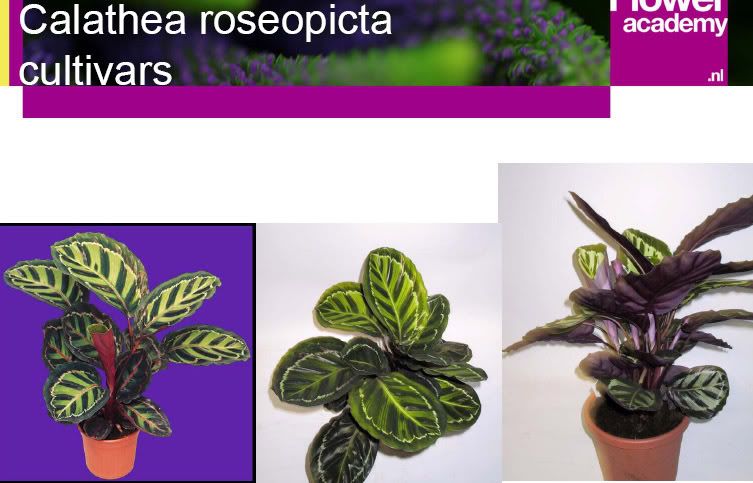
Сalathea Angela
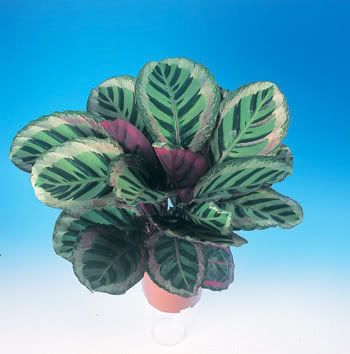
The Angela is a selection from the Rosea-Picta.
The plant has a dark green vein, and its edges change from white to pink.
C. Cora
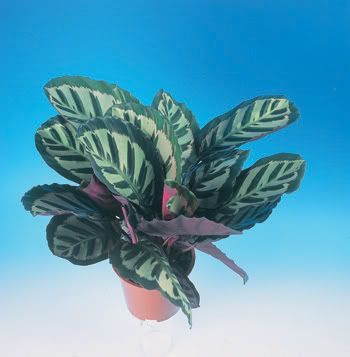
The Cora is also a selection from the Rosea-picta. Because of its very sharp leaf marking, dark edge and veins and a mint green leaf filling, it is a conspicuous plant.
Calathea roseopicta 'Silvia'
The Sylvia with its dark green leaf edge, and pink veins changing into beige, it is very striking plant among the Calatheas.
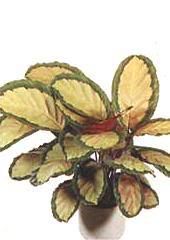
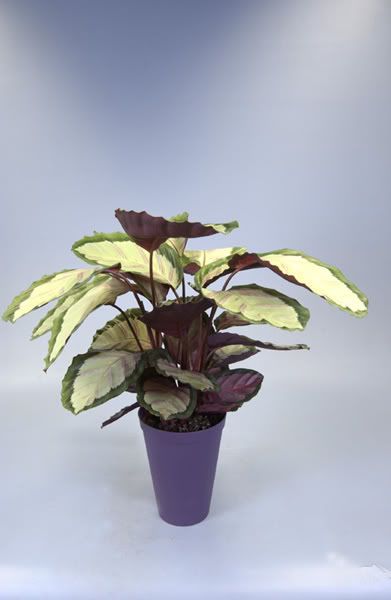
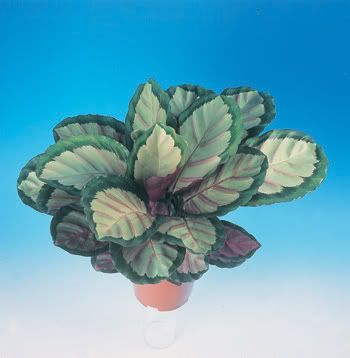
Calathea rosastar
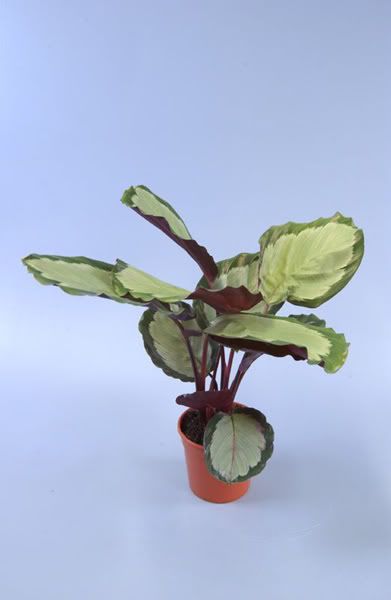
Calathea rosea Peacock
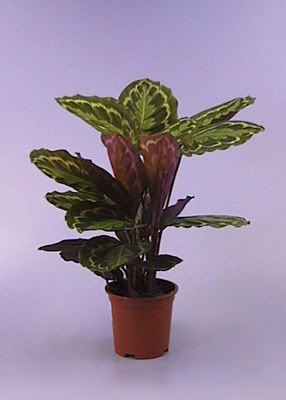
CalatheaMedallion
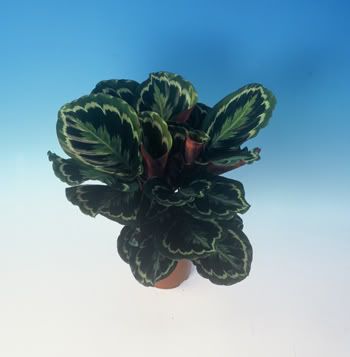
The Medaillon is a round-leafed species with a dark marked leaf and a light vein.
C. Rufibarbera
The Rufibarbera is a strong species with a beautiful dark sinuate leaf.
In the evening the plant closes its leaves. The Rufibarbera may flower between December and March, and its yellow flowers can be found in the lower part of the plant.
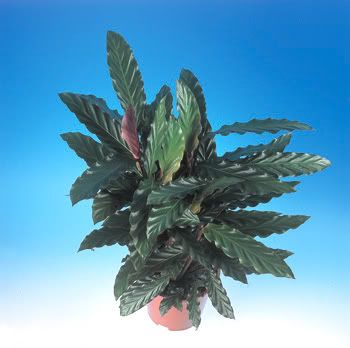
Calathea Rufibarba / Blue Grass - ?
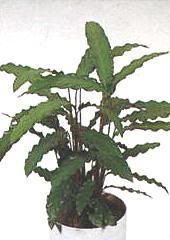
Calathea rubifarba BlueGrass
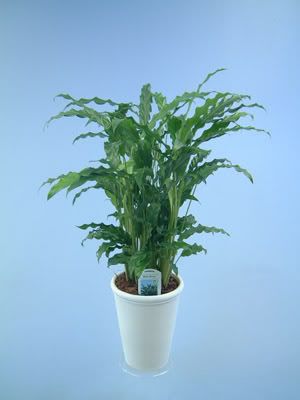

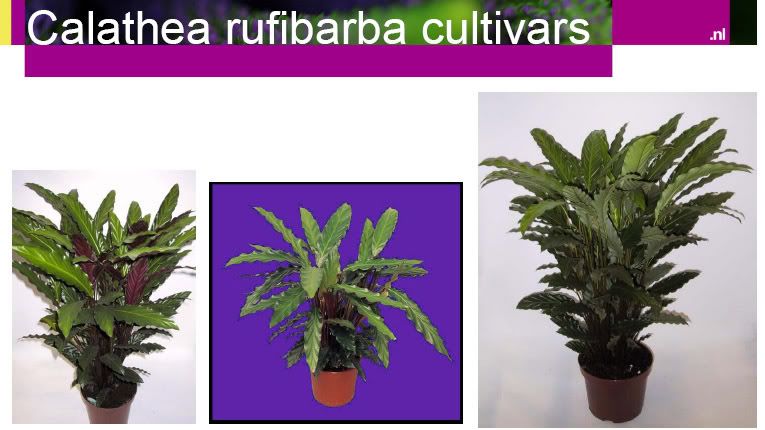
Calathea Blue Gr - Elgergrass
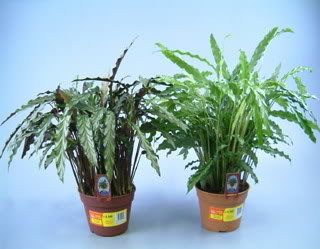
Calathea Miroscha
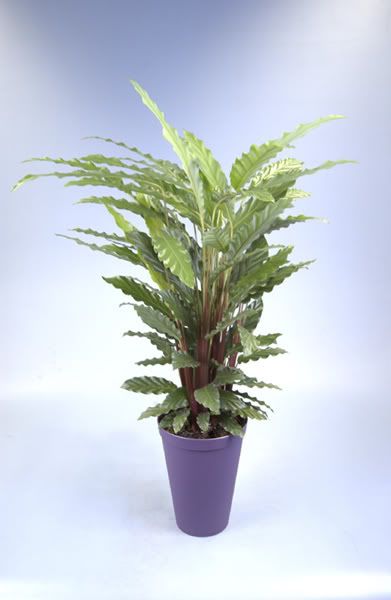

The Mirosha is a selection from the Rufibarba.
The difference is the colour of the leaf, which is fresh green.
It may have yellow flowers at the lower part of the plant, which usually happens in the months between December and March.
In the evening the Mirosha closes its leaves.
Ctenanthe
Ctenanthes danken hun naam aan het Griekse woord voor kam. De vele schutblaadjes die op de (onopvallende) bloeiaar zitten lijken namelijk op een kammetje.
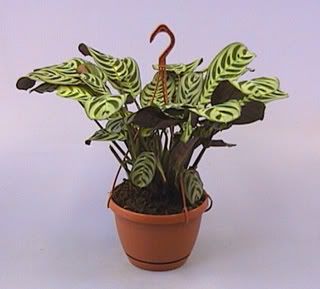
Распространена в Ю. Америке (Бразилия и Коста-Рика). Род включает 15 видов.
Травянистые многолетние корневищные растения. Листья цельные, крупные, асимметричные, овальные или овально-удлиненные, влагалищные, обычно сближенные из-за очень коротких междоузлий, как бы собранные в пучок, следующее за ним междоузлие оказывается очень сильно развитым, оно направлено вертикально или слегка наискось и заканчивается как бы вторым ярусом - новым пучком сближенных листьев. Таким же образом может образоваться и третий ярус. Цветки в колосовидных соцветиях, с густо сидящими прицветниками, малодекоративны.
Растение сравнительно теневыносливо, может расти на северных и западных окнах. Нуждается в частом опрыскивании, на светлых местах - в притенении от ярких солнечных лучей. Теплолюбиво, оптимальная температура зимой 16-18 градусов.
Земля должна быть постоянно влажной, поливают мягкой водой комнатной температуры. Растение необходимо часто опрыскивать, так как влажность воздуха - основное условие для жизни.
Размножают в основном вегетативно - делением куста или своебразными черенками - описанными выше пучками листьев, легко дающими корни в воде или песке при температуре почвы 25 градусов. Семена высевают при температуре 19-24С сразу же после созревания.
Ctenanthe lubbersiana Eichl.
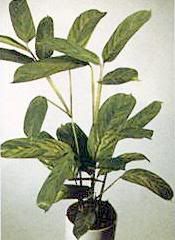
Ctenanthe setosa
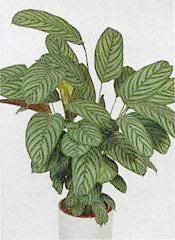
Ctenanthe oppenheimiana CTENANTE - ???! - сдается мне, что это - Строманте... 

Ctenante Burle Marxii
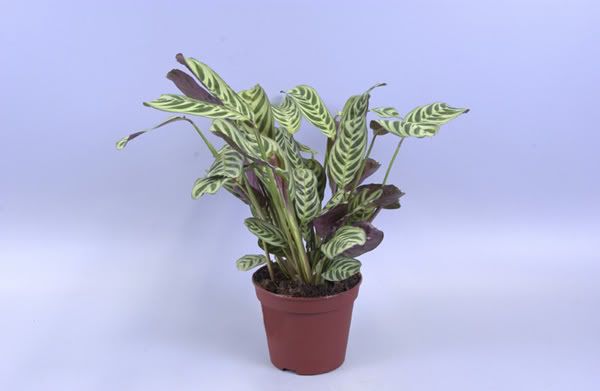
Ctenanthe golden Mosaïc
Deze verticaal groeiende plant heeft donkergroene bladeren met een mozaïek van gele vlakken. s’Avonds sluit de golden Mosaïc deze frisgekleurde bladeren als het minder licht wordt.
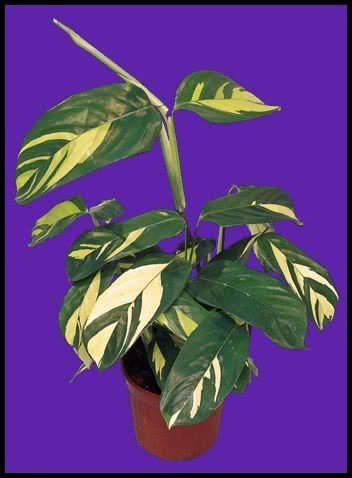
komt voor in Brazilië en Costa Rica, waar hij kan uitgroeien tot een struik van twee meter hoog.
Stromanthe
Род включает около 13 видов, происходящих из тропических районов Америки.
Даже при самом тщательном уходе растение долго не выдерживает в комнатных условиях. Лучше всего строманте выращивать в "цветочном окне" или настоящей оранжерее. Несколько большей стойкостью отличается строманте кроваво-красная - S. sanguinea - с менее яркой окраской листьев, но более крупная, достигающая 1,5 м в высоту.
Местоположение: светлое, но ни в коем случае не солнечное место, лучше всего при рассеянном освещении. В течение всего года содержат при температуре воздуха и почвы не ниже 20 градусов.
Почву постоянно поддерживают во влажном состоянии, используя мягкую воду комнатной температуры. Растение не переносит сухого воздуха - влажность воздуха должна быть не менее 60%.
Stromanthe sanquinea
The Sanquinea has long, small thick leaves with
a striking white vein. In the evening it closes its leaves.
This Calathea belongs to the strongest species that are available on the market.
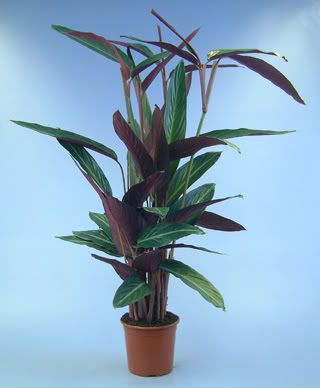
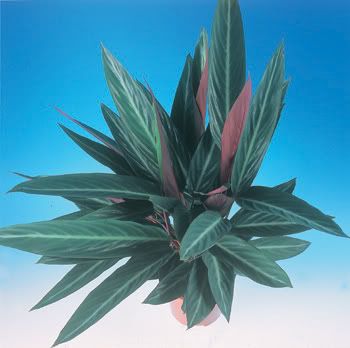
Stromanthe sanquinea Multicolor
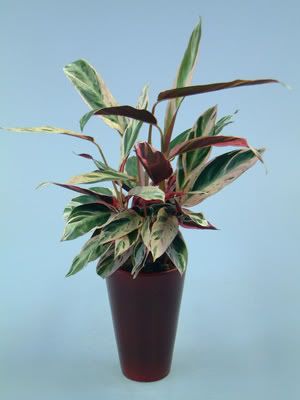
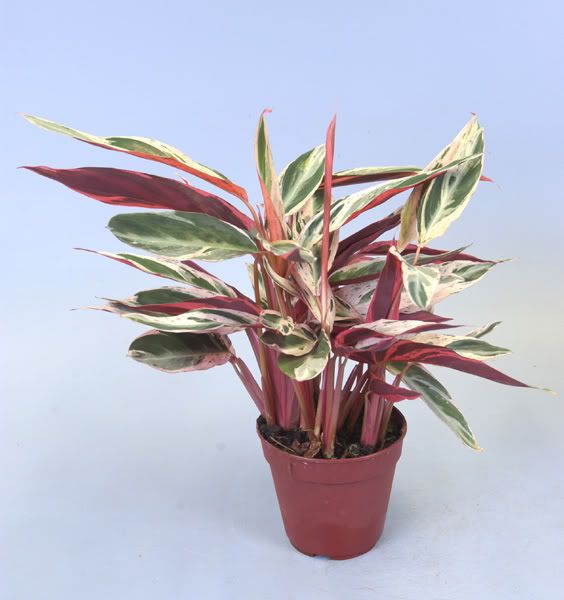
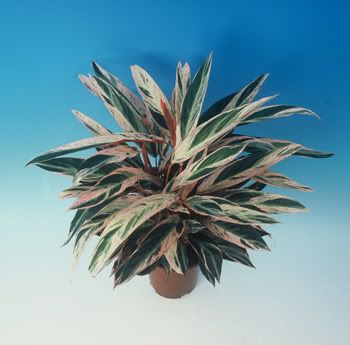
The Multicolor has long, small thick leaves with
a striking red to white colorsetting. In the evening it closes its leaves.
This Calathea belongs to the strongest species that are available on the market.
Stromanthe sanquinea Triostar
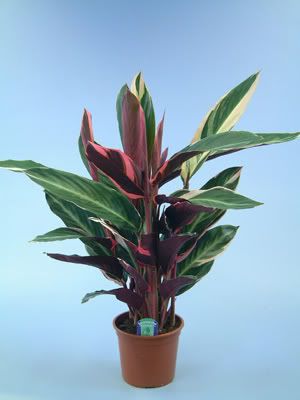

Horticolor
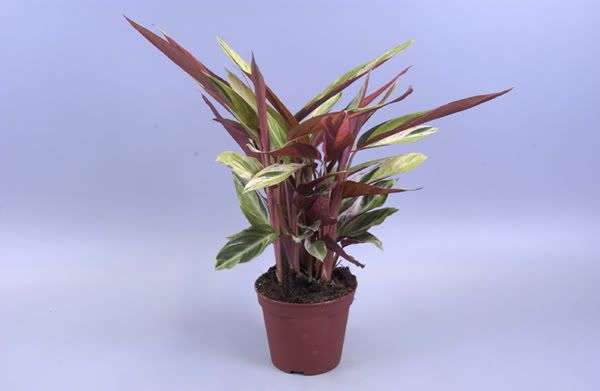
Maranta
Род назван в честь венецианского медика Бартоломео Маранты (18 в.). 23 вида какое щщастье! "всего" 23 !!, произрастающих в тропиках Америки.
Листья обладают способностью менять свое направление: листовые пластинки при благоприятных условиях располагаются почти горизонтально, а при недостатке освещения или при других неблагоприятных условиях поднимаются вверх и складываются вместе.
Можно выращивать без солнечного света, используя лампы ЛБ в течение 16 часов в сутки.
Местоположение: светлое, но не под прямыми солнечными лучами, возможно притененное. Теплым летом растение можно вынести на свежий воздух в тихое место, с притенением от прямых солнечных лучей и защитой от сквозняков. Зимой температура воздуха и почвы не должна опускаться ниже 18 градусов.
Полив: только мягкой водой комнатной температуры. Почва должна быть постоянно влажной, однако не следует допускать избытка воды в горшке. Растение следует часто и мелко опрыскивать, чтобы избежать появления пятен на листьях. При пониженной влажности воздуха растение помещают в поддон с водой.
Maranta leuconeura "Erythroneura" (tricolor)
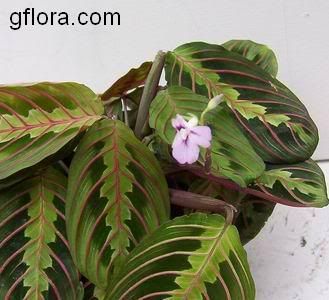
Maranta leuconeura "Massangeana"

если что, то http://www.starplant.nl/nl/default_frame.htm
http://www.teunvalstar.nl/
http://www.honselplant.nl/productinfo.htm